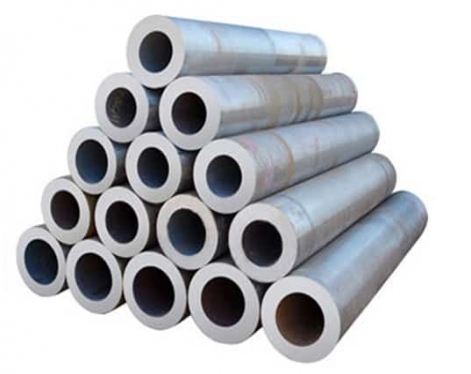200 series—chromium-nickel-manganese austenitic stainless steel.
300 series—chromium-nickel austenitic stainless steel.
301—Good ductility, used for molding products. It can also be hardened by mechanical processing. Good weldability. Wear resistance and fatigue strength are better than 304 stainless steel.
302-Corrosion resistance is the same as 304, because the carbon content is relatively high and the strength is better.
303—By adding a small amount of sulfur and phosphorus to make it easier to cut than 304.
304— 18/8 stainless steel. GB grade is 0Cr18Ni9.
309—Compared with 304, it has better temperature resistance.
316—After 304, the second most widely used steel is mainly used in the food industry and surgical equipment. The addition of molybdenum makes it obtain a special structure that resists corrosion. Because it has better resistance to chloride corrosion than 304, it is also used as "marine steel". SS316 is commonly used in nuclear fuel recovery devices. 18/10 grade stainless steel usually also meets this application level.
Model 321-Other properties are similar to 304 except that the addition of titanium reduces the risk of corrosion of the material weld.
400 series-ferritic and martensitic stainless steel.
408—Good heat resistance, weak corrosion resistance, 11% Cr, 8% Ni.
409—The cheapest model (British and American), usually used as an automobile exhaust pipe, is a ferritic stainless steel (chromium steel).
410—Martensite (high-strength chromium steel), with good wear resistance and poor corrosion resistance.
416—The addition of sulfur improves the processing properties of the material.
420—"Cutting grade" martensitic steel, similar to the earliest stainless steel such as Brinell high-chromium steel. It is also used for surgical knives and can be made very bright.
430—Ferritic stainless steel, used for decoration, for example, for car accessories. Good formability, but poor temperature resistance and corrosion resistance.
440—High-strength cutting tool steel with a slightly higher carbon content. After proper heat treatment, a higher yield strength can be obtained, and the hardness can reach 58HRC, which is among the hardest stainless steels. The most common application example is the "razor blade". There are three commonly used models: 440A, 440B, 440C, in addition to 440F (easy processing type).
500 series-heat-resistant chrome alloy steel.
600 series-martensitic precipitation hardening stainless steel.
630—The most commonly used precipitation hardening stainless steel model, usually also called 17-4; 17%Cr, 4%Ni.
|
material ingredient %
|
C |
Ni |
Cr |
Mn |
Si |
S |
P |
Mo |
Ti |
density |
Thermal conductivity 100℃ |
Coefficient of expansion20--100℃ |
Resistivity 20℃ |
|---|---|---|---|---|---|---|---|---|---|---|---|---|---|
|
201 |
≤0.15 |
3.5--4.50 |
16.00--18.00 |
5.5--7.50 |
<=1.0 |
<=0.030 |
<=0.035 |
||||||
|
202 |
≤0.15 |
4.0--6.0 |
17.00--19.00 |
7.5--10.0 |
<=1.0 |
<=0.030 |
<=0.035 |
7.74 |
16.3 |
15.5 |
0.65 |
||
|
301 |
≤0.15 |
6.00--8.00 |
16.00--18.00 |
<=2.0 |
<=1.0 |
<=0.030 |
<=0.035 |
||||||
|
304 |
≤0.08 |
8.00--10.00 |
18.00--20.00 |
<=2.0 |
<=1.0 |
<=0.030 |
<=0.035 |
7.93 |
16.3 |
16.0 |
0.73 |
||
|
316 |
≤0.08 |
10.00--14.00 |
16.00~18.00 |
<=2.0 |
<=1.0 |
<=0.030 |
<=0.035 |
2.00--3.00 |
7.98 |
16.3 |
16.0 |
0.75 |
|
|
430 |
≤0.12 |
0.06 |
16.00--18.00 |
≤1.00 |
≤1.00 |
≤0.030 |
≤0.040 |
||||||
|
439 |
≤0.03 |
≤0.5 |
17.00--19.00 |
≤1.00 |
≤0.030 |
≤0.040 |
≤0.04 |









